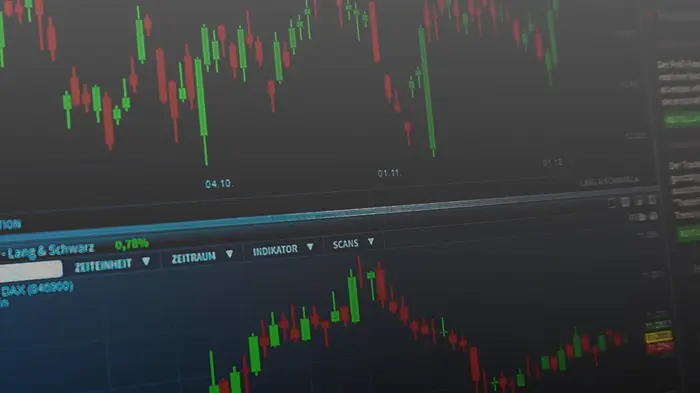In the world of trading, options offer a versatile way to capitalize on stock movements without necessarily owning the underlying asset. However, to trade options successfully, one must first understand how to chart stocks effectively. Charting stocks for options involves analyzing price movements, identifying trends, and making informed predictions about future price behavior. This article will guide you through the essential steps and techniques to chart stocks for options trading, ensuring you have a solid foundation to make informed decisions.
Understanding the Basics
What Are Options?
Options are financial derivatives that give the buyer the right, but not the obligation, to buy or sell an underlying asset at a predetermined price within a specified period. There are two types of options: calls and puts. A call option gives the holder the right to buy the asset, while a put option gives the holder the right to sell the asset.
Why Chart Stocks for Options?
Charting stocks is crucial for options trading because it helps traders visualize price movements, identify trends, and make predictions about future price behavior. By understanding how to read and interpret stock charts, traders can make more informed decisions about when to buy or sell options.
Types of Stock Charts
Line Charts
Line charts are the simplest form of stock charts. They plot the closing prices of a stock over a specific period, connecting the dots with a line. While line charts provide a clear view of the overall trend, they lack detailed information about price movements within the trading period.
Bar Charts
Bar charts provide more detailed information than line charts. Each bar represents a specific time period (e.g., a day) and shows the opening, closing, high, and low prices. The vertical line represents the high and low prices, while the horizontal lines on the left and right represent the opening and closing prices, respectively.
Candlestick Charts
Candlestick charts are similar to bar charts but are more visually intuitive. Each candlestick represents a specific time period and shows the opening, closing, high, and low prices. The body of the candlestick is filled or hollow, indicating whether the closing price was higher or lower than the opening price. Candlestick charts are widely used because they provide a clear visual representation of price movements and patterns.
Key Components of Stock Charts
Price Axis
The price axis, usually located on the right side of the chart, shows the price levels of the stock. It helps traders understand the range within which the stock has been trading.
Time Axis
The time axis, located at the bottom of the chart, shows the time period covered by the chart. It can range from minutes to years, depending on the trader’s preference and trading strategy.
Volume
Volume is an essential component of stock charts. It represents the number of shares traded during a specific period and is usually displayed as a histogram at the bottom of the chart. High volume often indicates strong interest in the stock, while low volume may suggest a lack of interest.
Indicators
Indicators are mathematical calculations based on price, volume, or open interest. They help traders analyze market trends, identify potential entry and exit points, and make informed decisions. Common indicators include moving averages, Relative Strength Index (RSI), and Bollinger Bands.
Charting Techniques for Options Trading
Trend Analysis
Trend analysis is the foundation of charting stocks for options trading. It involves identifying the direction of the stock’s price movement, which can be upward (bullish), downward (bearish), or sideways (neutral).
Identifying Trends
To identify a trend, traders often use trendlines, which are straight lines drawn on the chart to connect significant price points. An upward trendline connects the lows, while a downward trendline connects the highs. A sideways trendline indicates a range-bound market.
Support and Resistance Levels
Support and resistance levels are key concepts in trend analysis. Support is the price level at which a stock tends to find buying interest, preventing it from falling further. Resistance is the price level at which a stock tends to find selling interest, preventing it from rising further. Identifying these levels helps traders make informed decisions about when to buy or sell options.
Moving Averages
Moving averages are widely used in stock charting to smooth out price fluctuations and identify trends. They are calculated by averaging the stock’s prices over a specific period.
Simple Moving Average (SMA)
The Simple Moving Average (SMA) is the most basic type of moving average. It is calculated by adding the closing prices of the stock over a specific period and dividing by the number of periods. The SMA helps traders identify the overall trend and potential support and resistance levels.
Exponential Moving Average (EMA)
The Exponential Moving Average (EMA) gives more weight to recent prices, making it more responsive to recent price changes. The EMA is useful for identifying short-term trends and potential entry and exit points.
Relative Strength Index (RSI)
The Relative Strength Index (RSI) is a momentum oscillator that measures the speed and change of price movements. It ranges from 0 to 100 and is typically used to identify overbought or oversold conditions. An RSI above 70 indicates that the stock may be overbought, while an RSI below 30 indicates that the stock may be oversold.
Bollinger Bands
Bollinger Bands consist of a middle band (usually a 20-day SMA) and two outer bands that are standard deviations away from the middle band. They help traders identify volatility and potential price reversals. When the bands contract, it indicates low volatility, while expanding bands indicate high volatility.
Chart Patterns
Chart patterns are specific formations that appear on stock charts and provide insights into potential future price movements. Recognizing these patterns can help traders make informed decisions about when to buy or sell options.
Reversal Patterns
Reversal patterns indicate a potential change in the direction of the current trend. Common reversal patterns include head and shoulders, double tops, and double bottoms.
Head and Shoulders
The head and shoulders pattern consists of three peaks, with the middle peak (the head) being the highest and the two outside peaks (the shoulders) being lower. This pattern indicates a potential trend reversal from bullish to bearish.
Double Tops and Double Bottoms
Double tops and double bottoms are reversal patterns that occur after a strong trend. A double top consists of two peaks at approximately the same price level, indicating a potential reversal from bullish to bearish. A double bottom consists of two troughs at approximately the same price level, indicating a potential reversal from bearish to bullish.
Continuation Patterns
Continuation patterns indicate that the current trend is likely to continue. Common continuation patterns include triangles, flags, and pennants.
Triangles
Triangles are continuation patterns that form when the price consolidates within a narrowing range. There are three types of triangles: ascending, descending, and symmetrical. Ascending triangles indicate a potential bullish continuation, while descending triangles indicate a potential bearish continuation. Symmetrical triangles indicate a potential continuation in either direction.
Flags and Pennants
Flags and pennants are short-term continuation patterns that occur after a strong price movement. Flags are rectangular-shaped, while pennants are small symmetrical triangles. Both patterns indicate a potential continuation of the current trend.
Using Charts to Trade Options
Identifying Entry and Exit Points
One of the primary uses of stock charts in options trading is to identify potential entry and exit points. By analyzing trends, support and resistance levels, and chart patterns, traders can determine the best times to buy or sell options.
Buying Call Options
When a trader identifies a bullish trend or a potential upward breakout, they may consider buying call options. The goal is to profit from the anticipated increase in the stock’s price.
Buying Put Options
When a trader identifies a bearish trend or a potential downward breakout, they may consider buying put options. The goal is to profit from the anticipated decrease in the stock’s price.
Managing Risk
Risk management is a crucial aspect of options trading. Stock charts can help traders set stop-loss orders and determine position sizes to manage risk effectively.
Setting Stop-Loss Orders
A stop-loss order is an order to sell an option if the stock’s price reaches a certain level. By setting a stop-loss order, traders can limit their potential losses if the trade goes against them.
Determining Position Sizes
Position sizing involves determining the number of options contracts to buy or sell based on the trader’s risk tolerance and the size of their trading account. By analyzing stock charts, traders can determine the potential risk and reward of a trade and adjust their position size accordingly.
Advanced Charting Techniques
Fibonacci Retracement
Fibonacci retracement is a technical analysis tool that uses horizontal lines to indicate potential support and resistance levels. These levels are based on the Fibonacci sequence and are often used to identify potential reversal points.
Ichimoku Cloud
The Ichimoku Cloud is a comprehensive technical analysis tool that provides information about support and resistance levels, trend direction, and momentum. It consists of five lines that form a “cloud,” which helps traders identify potential entry and exit points.
Volume Profile
The Volume Profile is a technical analysis tool that shows the volume traded at specific price levels. It helps traders identify significant support and resistance levels and understand the distribution of volume across different price levels.
Conclusion
Charting stocks for options trading is a skill that requires practice and dedication. By understanding the basics of stock charts, key components, and various charting techniques, traders can make informed decisions and improve their chances of success in the options market. Remember that no charting method is foolproof, and it’s essential to combine technical analysis with sound risk management and a well-defined trading strategy. With time and experience, you can develop the expertise needed to navigate the complex world of options trading confidently.
Related topics:


































